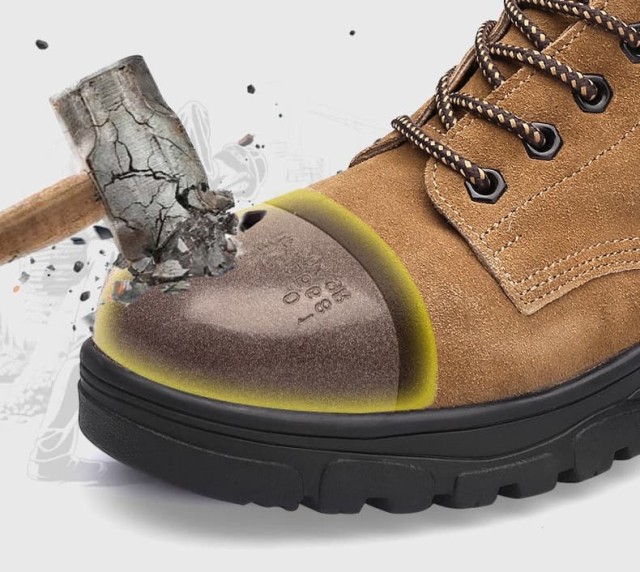Selecting the right tactical boot toe material isn't just about comfort—it's a critical safety decision that impacts injury prevention, mobility, and job performance. Whether you're navigating construction sites, electrical hazards, or high-security areas, understanding the strengths of steel versus composite toes ensures your footwear matches real-world occupational risks.
Tactical Boot Toe Materials Demystified
Material Properties and Safety Certifications
Steel toes, the traditional choice, meet ASTM F2413 standards for impact/crush resistance, offering proven protection against heavy falling objects. Composite alternatives (typically fiberglass, carbon fiber, or Kevlar®) provide similar certified protection while addressing niche needs:
- Non-conductive: Essential for electricians (composite won’t conduct electricity)
- Metal-detector friendly: Required for airport security or nuclear facility workers
- Thermal insulation: Performs better in extreme temperatures than steel
Research shows composite materials reduce heat transfer by approximately 30% compared to steel in sub-zero conditions, a key factor for oil rig workers or cold-storage warehouse staff.
Weight-to-Protection Ratios by Industry
| Industry | Recommended Toe Type | Rationale |
|---|---|---|
| Construction | Steel | Heavy object protection |
| Electrical | Composite | Non-conductive safety |
| Security | Composite | Metal detector compliance |
| Manufacturing | Steel/composite | Balance durability and fatigue |
Occupational Hazard Alignment
High-Impact vs Repetitive Motion Environments
Steel toes excel in high-impact scenarios (e.g., logging, warehousing), where a 50-lb falling object could crush conventional footwear. However, their rigidity increases fatigue during prolonged walking—composite toes reduce leg strain by 15–20% for patrol officers or delivery drivers, according to ergonomic studies.
Temperature and Electrical Hazard Considerations
- Steel drawbacks: Conducts cold/heat rapidly, risking frostbite in freezing temperatures or heat retention in deserts.
- Composite advantages: Insulates against temperature extremes and eliminates electrical conductivity risks (critical for utility linemen working near live wires).
A common misconception? That steel offers "total" protection. In reality, ASTM ratings for both materials certify equal impact resistance—the difference lies in secondary hazards like conductivity or thermal transfer.
Long-Term Wear Factors
Fatigue Reduction in Composite Designs
Composite toes weigh 30–50% less than steel, reducing energy expenditure over 10,000+ daily steps. For EMS personnel or hikers, this translates to:
- Less calf and arch strain
- Improved agility in emergencies
- Lower risk of repetitive stress injuries
Maintenance Requirements Comparison
| Factor | Steel Toe | Composite Toe |
|---|---|---|
| Rust prevention | Regular oiling | Not required |
| Dent repair | Impossible | Limited feasibility |
| Lifespan | 2–4 years | 1–3 years |
Pro tip: Inspect steel toes monthly for dent deformities that compromise protection; composite toes degrade gradually from UV exposure or chemical contact.
Ready to Equip Your Team with Optimized Safety Footwear?
3515 partners with distributors and bulk buyers to deliver purpose-built tactical boots—from steel-toe durability for construction crews to lightweight composite designs for security teams. [Contact our specialists] to match your occupational hazards with certified protection.
Related Products
- Wholesale Customizable Suede Safety Boots - Puncture-Proof with Velcro Closure
- Puncture-Resistant Velcro Safety Boots for Wholesale & Custom Manufacturing
- Customizable Anti-Smash Safety Boots for Wholesale & Private Label Manufacturing
- Wholesale Leather Safety Boots with Customizable Protective Toe
- Wholesale Durable Safety Boots Manufacturer Customizable Steel Toe Work Boots
Related Articles
- Steel Toe Work Boots: Balancing Safety and Comfort for Demanding Jobs
- How to Choose Work Boots That Match Your Job's Safety Demands
- Matching Men’s Work Shoe Safety Technologies to Workplace Hazards
- How to Choose Work Boots That Match Your Industry's Safety Needs
- Work Boots vs. Western Boots: How to Choose the Right Footwear for Labor Safety




















